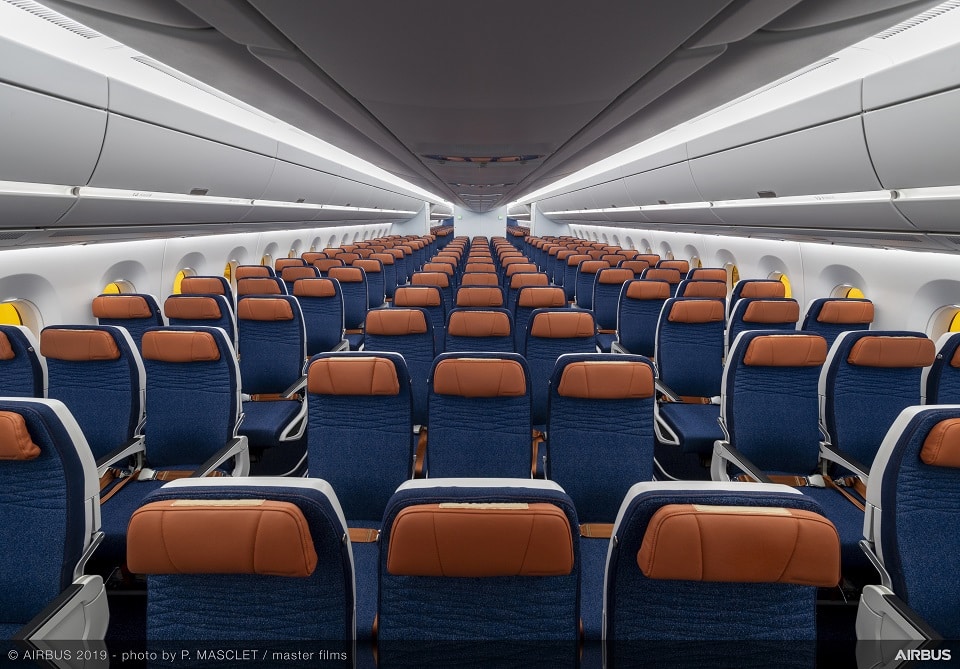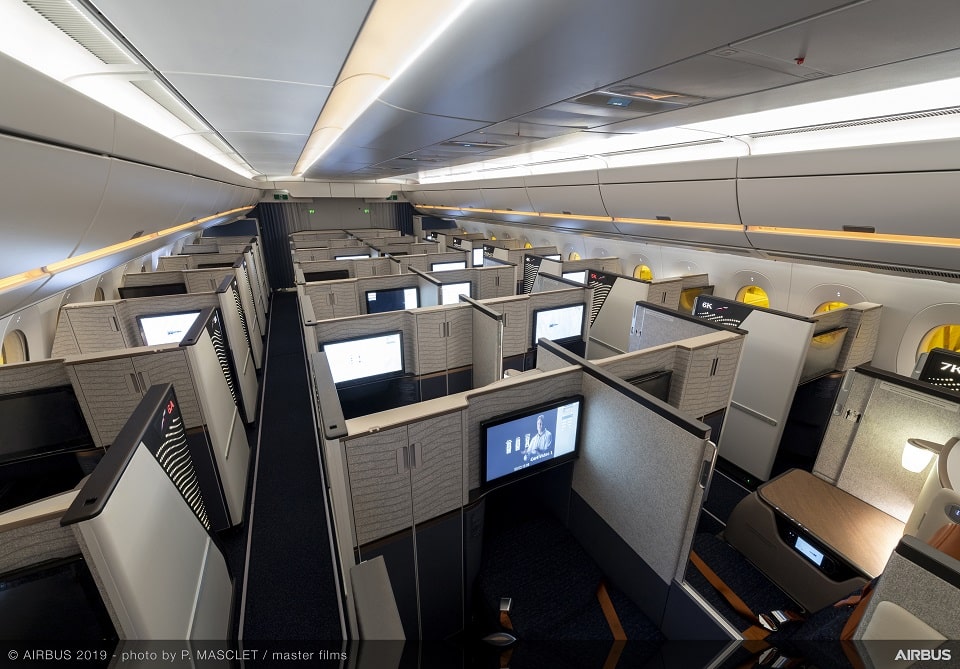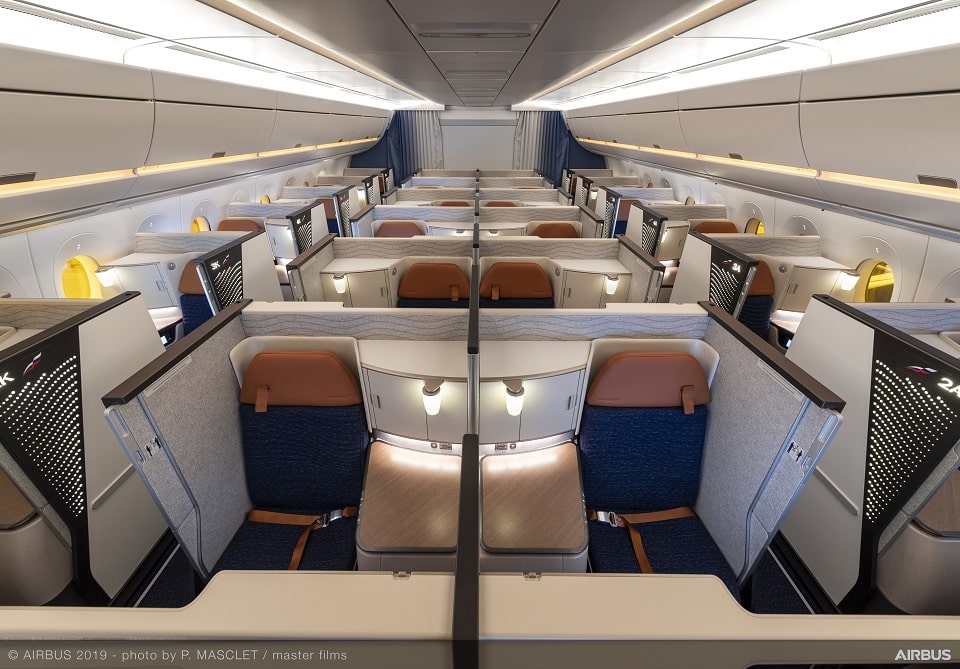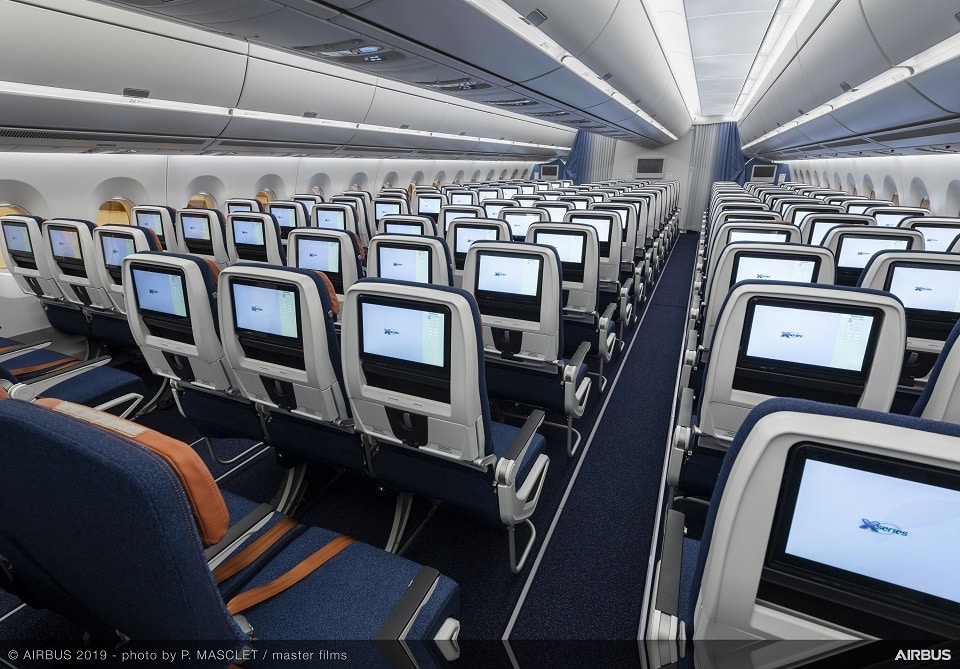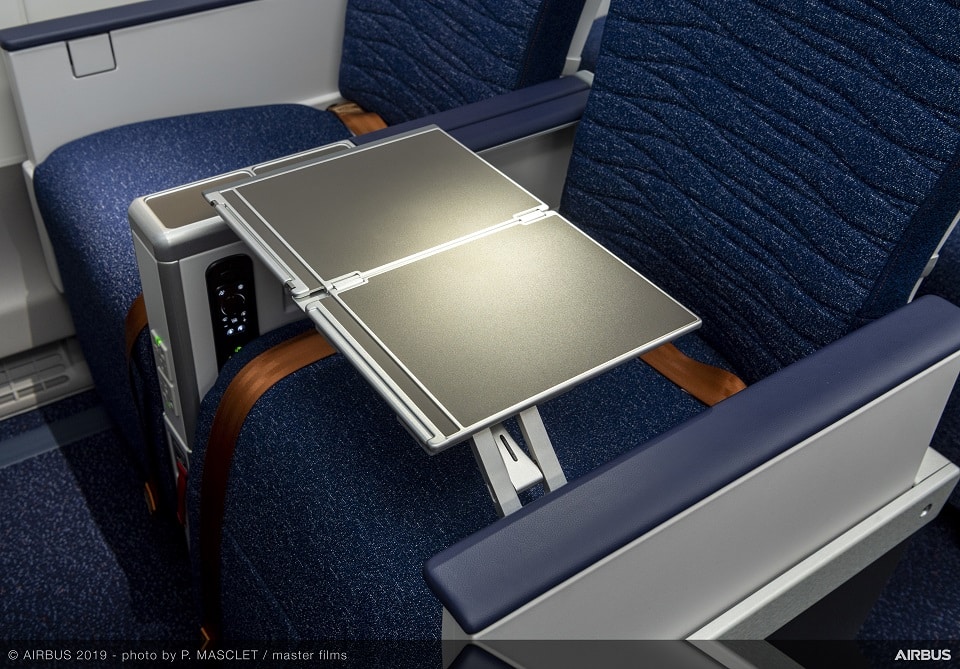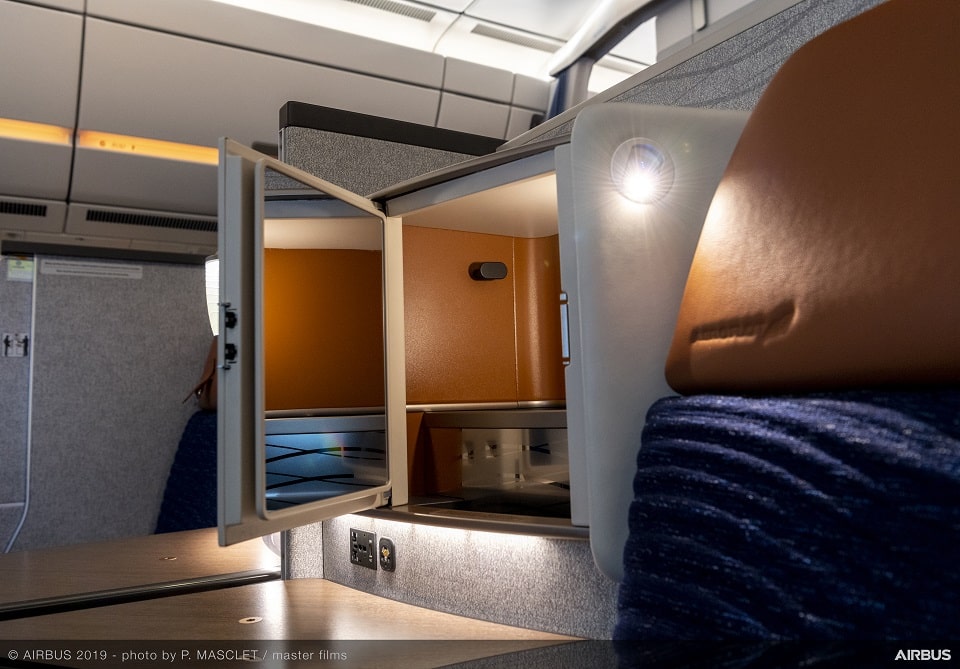Aerospace
This could be Air India’s upcoming A350 cabin, which will definitely draw attention.

Airbus is now in the process of committing to the supply of 34 A350-1000 and six A350-900 aircraft. The six Aeroflot A350 aircraft are in excellent condition and will be delivered to Air India at a price that has been negotiated. The Airbus manufacturing facility is where the planes are.
In Gesture To Israel, Saudi Arabia Opens Airspace To ‘All Carriers’.(Opens in a new browser tab)
Wide and narrow-body aircraft are likely to be introduced into the operations divisions of Air India’s Vihaan 5-year plan for development. The six planes are MSNs 554/558/585/589/592/594. The first #A350 for #AirIndia is scheduled to arrive in 2023, followed by others in close succession.
According to Campbell Wilson, CEO of Air India, the company would continue to use the Aeroflot A350’s current configuration due to supply chain and timing restrictions. The aeroplane’s cabin is decorated in an opulent blue and orange colour scheme. It won’t undergo any alterations, and the external livery for Air India will still be present on the aircraft.
About Aeroflot A350-900
Aeroflot, the Russian flag carrier and member of the SkyTeam alliance. Aeroflot’s A350-900 features a distinctive new livery embracing its almost 100-year heritage. Aeroflot has a total of 22 A350-900 aircraft on order and operates an Airbus fleet of 126 aircraft (107 A320 Family and 19 A330 Family aircraft).
Aeroflot’s A350-900 features a brand-new elegant cabin design, offering unrivalled passenger comfort. The aircraft has a spacious three-class cabin layout with 316 seats: 28 private Business Class suites with full-flat seats, 24 Comfort Class with extra legroom and 264 Economy Class. In addition, the latest-generation Panasonic eX3 in-flight entertainment system, HD screens and Wi-Fi connectivity will ensure an enhanced experience for all passengers on long-haul flights. Aeroflot will operate its A350-900 from Moscow to a number of destinations including London, Dubai, New York, Miami, Osaka and Beijing.
The A350 XWB offers by design unrivalled operational flexibility and efficiency for all market segments – up to ultra-long haul (9,700 nm). Its Airspace by Airbus cabin is the quietest of any twin-aisle aircraft and offers passengers and crews the most modern in-flight flying experience. The aircraft features the latest aerodynamic design, a carbon fibre fuselage and wings, plus new fuel-efficient Rolls-Royce Trent XWB engines.
Together, these latest technologies result in 25% lower operating costs, as well as a 25% reduction in fuel burn and CO2 emissions compared with previous-generation competing aircraft – demonstrating Airbus’ commitment to minimising its environmental footprint while remaining at the cutting edge of air travel.
Air India’s Aircraft orders for Airbus
The Tata Group-owned Air India has announced its commitment to order 250 Airbus aircraft to boost its domestic and international operations. The commitment includes 140 A320neo and 70 A321neo single-aisle aircraft as well as 34 A350-1000 and six A350-900 wide-body jets that will mark a new era for the country as the all-new, long-range aircraft celebrates its debut in the Indian market.
The order aims to both modernise and expand the airline’s fleet with the objective of creating a larger and premium full-service carrier that will cater to the growing travel demand in the region. Deliveries are set to commence with the first A350-900 arriving by late-2023.
The A350 is the world’s most modern and efficient wide-body aircraft in the 300-410 seater category. The A350’s clean sheet design includes state-of-the-art technologies and aerodynamics delivering unmatched standards of efficiency and comfort.

Aerospace
Boeing Transfers Rocket Stage to NASA, Paving Way for Human Moon Mission

Boeing has achieved a significant milestone by providing NASA with the second core stage of the Space Launch System (SLS) rocket.
This crucial component, crafted at NASA’s Michoud Assembly Facility (MAF), is set to propel the Artemis II crew into lunar orbit, marking humanity’s return to deep space after a 50-year hiatus.
The monumental Boeing-built rocket stage, the largest element of the Artemis II mission, will embark on a journey aboard the Pegasus barge, traveling 900 miles to NASA’s Kennedy Space Center.
Comparison of two legendary aircraft B777x vs B747 aircraft:Click here
Upon arrival, it will be meticulously integrated with other essential Artemis II components, including the upper stage, solid rocket boosters, and NASA’s Orion spacecraft within the iconic Vehicle Assembly Building. This intricate integration process is a vital step toward the eagerly anticipated Artemis II launch, slated for 2025.
“Boeing-built products helped land humankind on the moon in 1969, and we’re proud to continue that legacy through the Artemis generation,” remarked Dave Dutcher, vice president and program manager for Boeing’s SLS program. “Together, with NASA and our industry partners and suppliers, we are building the world’s most capable rocket and paving the way to deep space through America’s rocket factory in New Orleans.”
NASA, Lockheed Martin Reveal X-59 Quiet Supersonic Aircraft:Click here
The delivery of Core Stage 2 marks a significant achievement in the evolution of the SLS rocket. Towering over 200 feet and powered by four RS-25 engines, this core stage, coupled with two solid-fueled booster rockets, will generate a staggering 8.8 million pounds of thrust. This immense power is crucial to launching Artemis II and future missions into the vast expanse of space.
The SLS rocket stands unparalleled in its capability to transport both crew and substantial cargo to the moon and beyond in a single launch. Its extraordinary capacity will facilitate the delivery of human-rated spacecraft, habitats, and scientific missions to destinations including the moon and Mars, ushering in a new era of space exploration.
-

 Travel1 week ago
Travel1 week agoAir India to Expand US Operations with Three New Routes After a Decade
-

 Travel2 weeks ago
Travel2 weeks agoWhy We Should Avoid These Stamps in a Passport
-

 Airlines1 month ago
Airlines1 month agoInvestigations Reveal Fake Chinese Titanium in Boeing and Airbus Jets
-

 Tech4 weeks ago
Tech4 weeks agoChina’s CATL Plans 1,800-Mile Electric Plane Launch by 2027
-

 Airport3 days ago
Airport3 days agoTop 10 Largest Airports in the World by Size
-

 Aerospace4 weeks ago
Aerospace4 weeks agoChina’s Fighter Jets Turn Wings into Autonomous Drones
-

 Airlines4 days ago
Airlines4 days agoAir India Rolls Out A350s for Delhi-New York JFK and Newark Routes
-

 Defence3 weeks ago
Defence3 weeks agoBoeing Enhances Chinook with New Engines and Block II Upgrades at $96 Million

